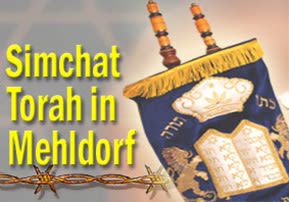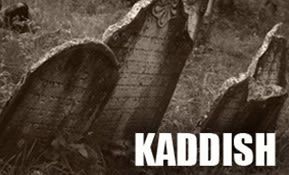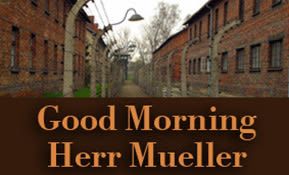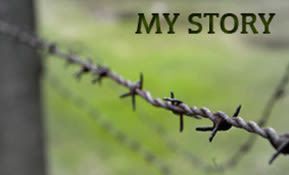
Simchat Torah: The Klausenburger Rebbe in Mehldorf
Finally, they found him. A rickety stool stood in the center of the room. On top of the stool were the torn remnants of a gemara. The Rebbe, his face...

On Shmini Atzeret and Simchat Torah we finish reading the Torah — and then immediately start reading from the beginning again. Most Jewish communities around the world celebrate Shmini Atzeret and Simchat Torah with hakafot – the community dances around the shul with the sifrei Torah – Torah scrolls. Simchat Torah is such a joyous holiday because it celebrates our most precious gift, the Holy Torah. Without the Torah, we would be like all the other nations. With the Torah, we have a spiritual road map to guide us in life.
The following amazing true story illustrates one Jew's devotion on this Yom Tov.
Shemini atzeret was fast approaching and Rabbi Yekutiel Yehudah Halberstam, the Klausenburger Rebbe, had decided to spend that day alone with his Creator. Although he was incarcerated in Mehldorf, a forced labor camp, he was not about to let the Nazis ruin his Yom Tov. "Let those barbaric animals do what they may, but I will not work on that day," he said. Arrangements were begun to provide the Rebbe with a work furlough for the upcoming Yom Tov.
In Klausenburg, chassidim had come from afar to catch a glimpse of the Rebbe's devotion to Hashem and His Torah. Fathers had hoisted their young children onto their shoulders to observe the Rebbe's fervent dancing. The chassidim – both young and old –had enthusiastically danced as they added yet another link to the chain of tradition stretching from Mount Sinai.
But those were the glorious days of yesteryear. The shtetl of Klausenburg no longer existed. It was only a distant memory; it had been destroyed, set afire by the cursed Germans. The Jews who had lived there had been brutally driven into the gas chambers and crematoria. The inmates of Mehldorf were the fortunate ones.
All the forced laborers harbored memories of the festive aura of Succot that had permeated the narrow streets of Klausenburg, each succah more beautifully adorned than the next, men grandly marching through the streets with their own "weapons of battle" — the fragrant etrog accompanied by the regal lulav, its stalwart companion.
Dr. Greenbaum, the Jewish camp doctor, was willing to help the Rebbe refrain from work on Shemini Atzeret. Bribes were distributed and, on erev Yom Tov, the Rebbe was admitted to the infirmary. One of the Chassidim, Moshe Einhorn, found out that the Nazis would be conducting a selektsia on the holiday, to weed out all those who were too weak to work and send them to their deaths. Their first stop was to be the infirmary.
Moishe pleaded with Dr. Greenbaum to send the Rebbe back to work.
The doctor ordered the Rebbe to return to the barracks, the Rebbe was resolved to refrain from any physical labor. He refused to come to roll call. His absence was noted and guards were sent to inspect the barracks.
The S.S. men found the "Rabbiner" praying. They angrily seized him, threw him down on the cold floor and mercilessly dragged him outside. They struck him repeatedly, first lashing out with truncheons, then kicking him with their metal tipped boots.
When it was over, several inmates carried the bleeding Rebbe to the infirmary. Then they reluctantly set out to work. They assumed that they would never see the Rebbe again.
At the end of the workday, a few brave inmates rushed to the dilapidated infirmary to find out what had happened to their Rebbe. Fearing the worst, they stealthily made their way through the building, peeking into the poorly maintained rooms.
Finally, they found him. A rickety stool stood in the center of the room. On top of the stool were the torn remnants of a gemara. The Rebbe, his face aglow with an unworldly radiance, was dancing (yes, dancing!) around this makeshift bima, celebrating the holiday.
There were no fathers hoisting their children onto their shoulders to catch a glimpse of the Rebbe. There were no Chassidim to dance enthusiastically. Yet, perhaps as never before, the Rebbe had united with his Creator, with the understanding that indeed, "Ein … od… milvado," "There is nothing and no one besides Him!"
(Used with permission from "Good Shabbos")







